Our first trip to Ko Kret was an adventure, but for our second, we dug a bit deeper into its rich history.
The Burmese term “Mon” is synonymous with the Burmese word for “Noble”. Source.
The Mon are an ethnic group who inhabit Lower Myanmar’s Mon State, Kayin State, Kayah State, Tanintharyi Region, Bago Region, the Irrawaddy Delta, and several areas in Thailand (mostly in Pathum Thani province, Phra Pradaeng and Nong Ya Plong). The native language is Mon, which belongs to the Monic branch of the Mon-Khmer language family and shares a common origin with the Nyah Kur language, which is spoken by the people of the same name that live in Northeastern Thailand. A number of languages in Mainland Southeast Asia are influenced by the Mon language, at the same time being influenced by those languages.
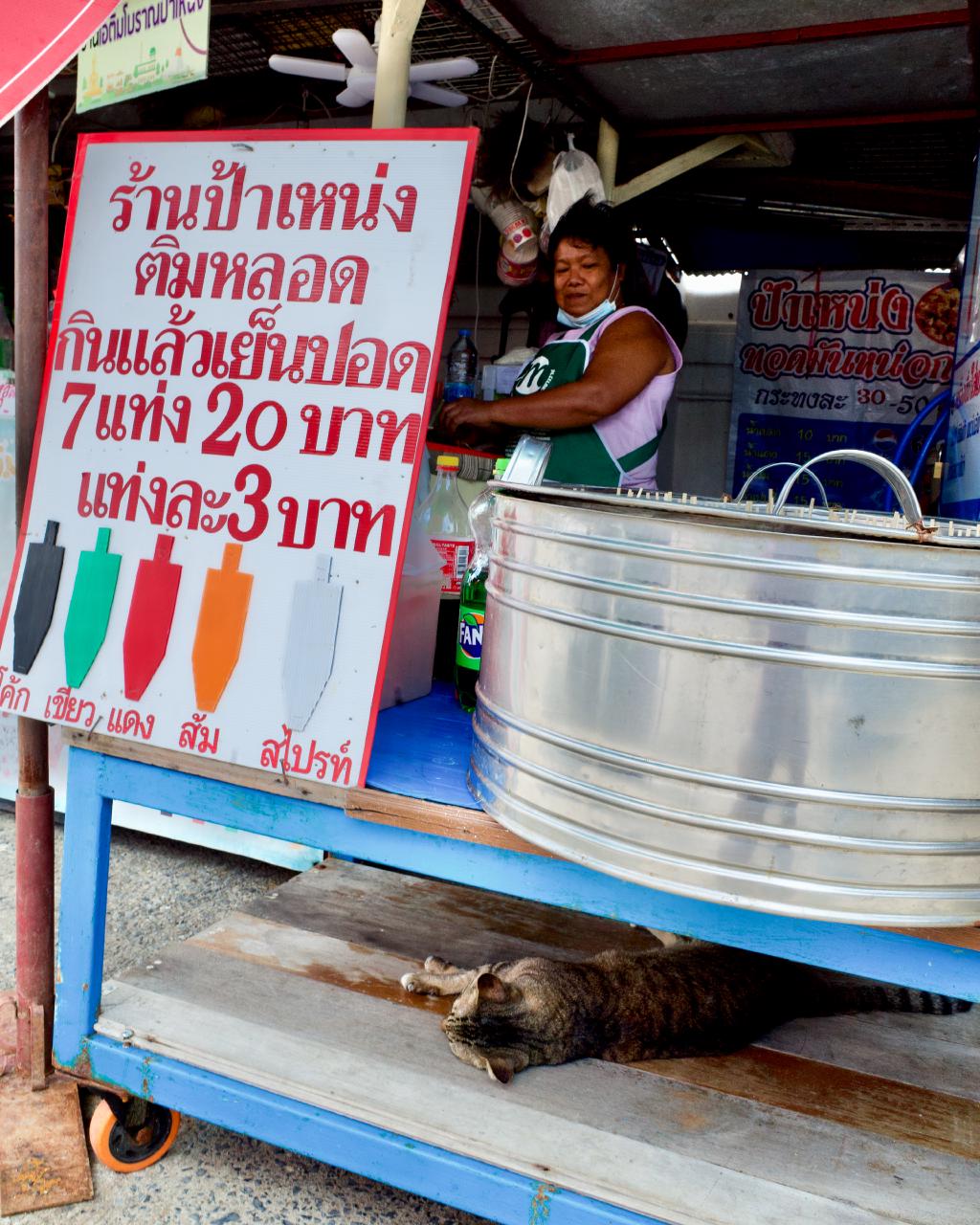
The Mon were one of the earliest to reside in Southeast Asia, and were responsible for the spread of Theravada Buddhism in Mainland Southeast Asia. The civilizations founded by the Mon were some of the earliest in Thailand as well as Myanmar and Laos. The Mon are regarded as a large exporter of Southeast Asian culture.

Historically, many cities in Myanmar, Thailand, and Laos today, including Yangon, Bangkok, and Vientiane were founded either by the Mon people or Mon rulers.
Nowadays, the Mon are a major ethnic group in Myanmar and a minor ethnic group in Thailand. The Mons from Myanmar are called Burmese Mon or Myanmar Mon. The Mons from Thailand are referred as Thai Raman or Thai Mon. The Mon dialects of Thailand and Myanmar are mutually intelligible.

Ko Kret pottery
The main occupation of the Mon people in Ko Kret is making pottery of which the knowledge and expertise has been carried on from their ancestors for over 200 years. Historically, Ko Kret is widely known as a community of excellent potters. Ko Kret also has good quality clay suitable for making pottery. Its clay is tough and not crumbly. Its color is yellowish, not too dark. Its pottery has a unique characteristic, beautiful, durable and suitable for utility. Source.
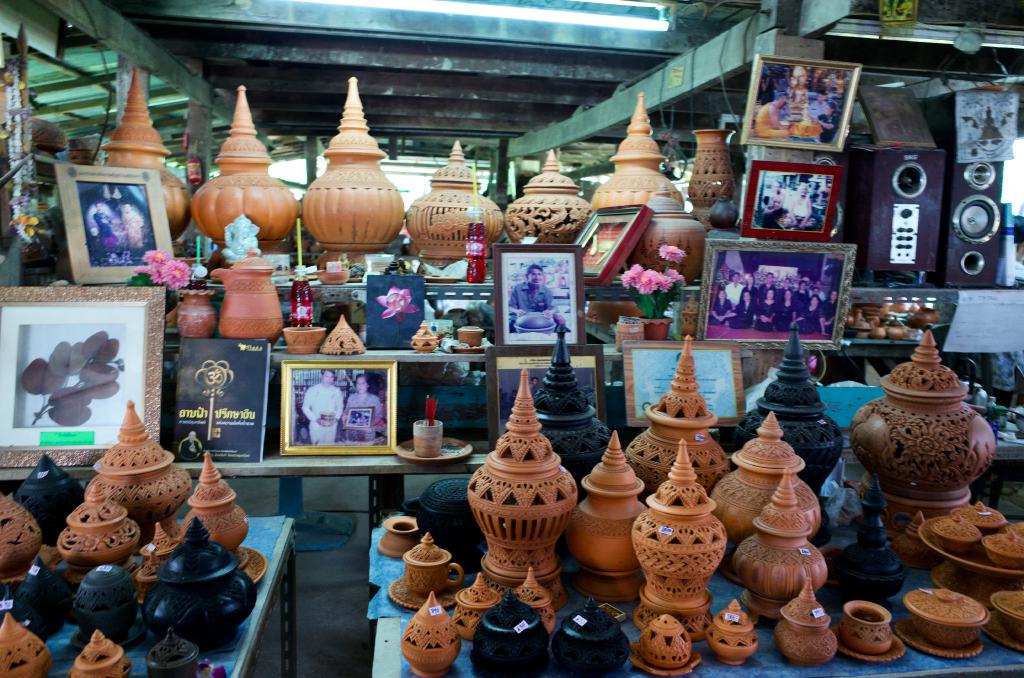
Traditionally, Ko Kret pottery was created simply by scratching and shaping. Now it is also perforated to have more detailed patterns. Decorative patterns are meant to reflect nature, such as lotus flower petals, leaves, and flowers.
Currently, utilization of Ko Kret pottery has dwindled due to the advancement of technology. Thai people tend to use more modern replacements instead. This has caused Ko Kret pottery to evolve more as a decorative art form and now serve as souvenirs and collectibles.
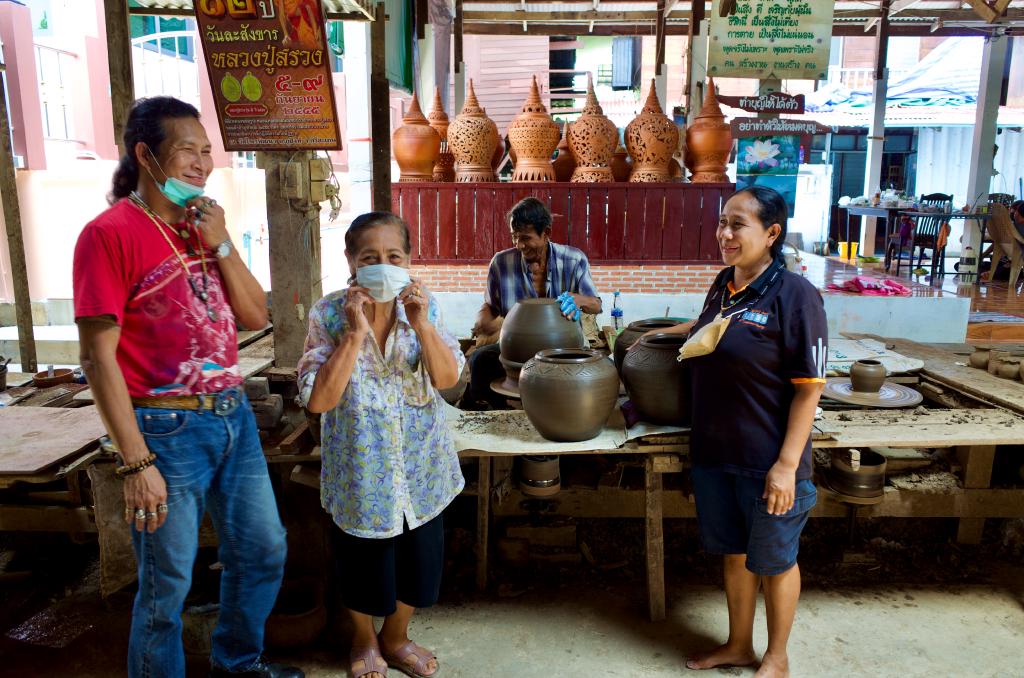
The pottery is highly porous earthenware with a light orange to red color. The ones found in black are made from a mixture of colored clay husk burned at high temperature. The designs are traditionally made from carving with an ancient Mon specialty tool using the thorns of a coral tree.
People in the Sukhothai province normally use this pottery to ripen fruit, such as sapodilla. Fruit gardeners in Thonburi and Nonthaburi normally use it to ripen banana. Small engraved jars are normally used by sellers in a boat to keep drinking water.
The “cauldrons” used to keep drinking water have a round bottom with a supporting pedestal. Its lid is pointed. It symbolizes a pagoda which is an inspiration of the Mon people who are Buddhist. Its body is round, representing fertility. In the past, a cauldron was not engraved completely, some areas were left with a smooth surface for better heat release and to keep the water cool and refreshing. Currently, exquisite patterns are engraved for aesthetics as they are no longer used to keep water.
Scenes from the day
 Catching the ferry at Wat Sanam Nuea.
Catching the ferry at Wat Sanam Nuea.
 Classic Thai tea stall. Please drink Thai tea!
Classic Thai tea stall. Please drink Thai tea!
 A shopkeeper lazes alongside his cat.
A shopkeeper lazes alongside his cat.
 บั or Bua is what Thai people call lotus flowers. Lotus flowers are incredibly useful. All parts of them are edible and can be used as medicine to improve blood circulation and the digestive system. Thai people also plant them in basins at home to increase their good fortune.
บั or Bua is what Thai people call lotus flowers. Lotus flowers are incredibly useful. All parts of them are edible and can be used as medicine to improve blood circulation and the digestive system. Thai people also plant them in basins at home to increase their good fortune.
Generally, the lotus flower is regarded as a symbol of purity, faithfulness and spiritual awakening. This is because the lotus itself emerges from the mud and keeps growing toward the light and warmth, representing the act of rising above the sea of defilement while aspiring for enlightenment.
Thai people usually offer them to the Buddha statues, along with a candle and 3 incense sticks. They believe that, by offering nice things to Buddha, they will accumulate merit and thus attract good fortune into their life.
Some people also fold lotus petals in order to add to the beauty of the already beautiful flowers. Source
Lotus plants are adapted to grow in the flood plains of slow-moving rivers and delta areas. Stands of lotus drop hundreds of thousands of seeds every year to the bottom of the pond. While some sprout immediately, and most are eaten by wildlife, the remaining seeds can remain dormant for an extensive period of time as the pond silts in and dries out. During flood conditions, sediments containing these seeds are broken open, and the dormant seeds rehydrate and begin a new lotus colony.
Under favorable circumstances, the seeds of this aquatic perennial may remain viable for many years, with the oldest recorded lotus germination being from seeds 1,300 years old recovered from a dry lakebed in northeastern China. Therefore, the Chinese regard the plant as a symbol of longevity. Source
 Biking the elevated concrete pathways is popular.
Biking the elevated concrete pathways is popular.
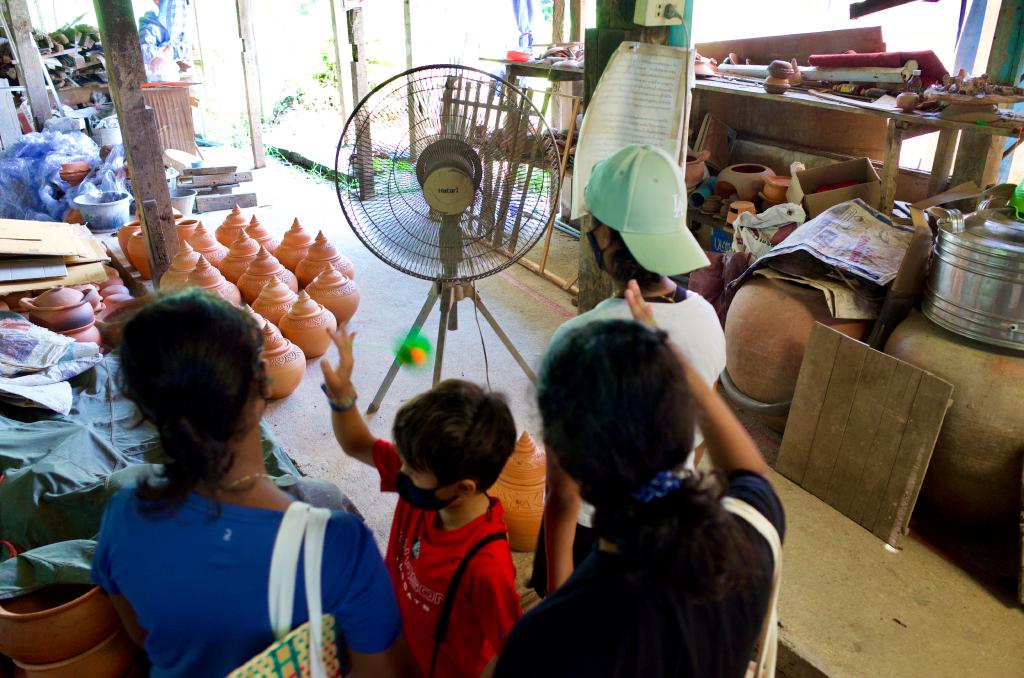 Playing and cooling off while we scope the pottery.
Playing and cooling off while we scope the pottery.
 A peak through the rafters yields some stunning scenery.
A peak through the rafters yields some stunning scenery.

 Offerings.
Offerings.
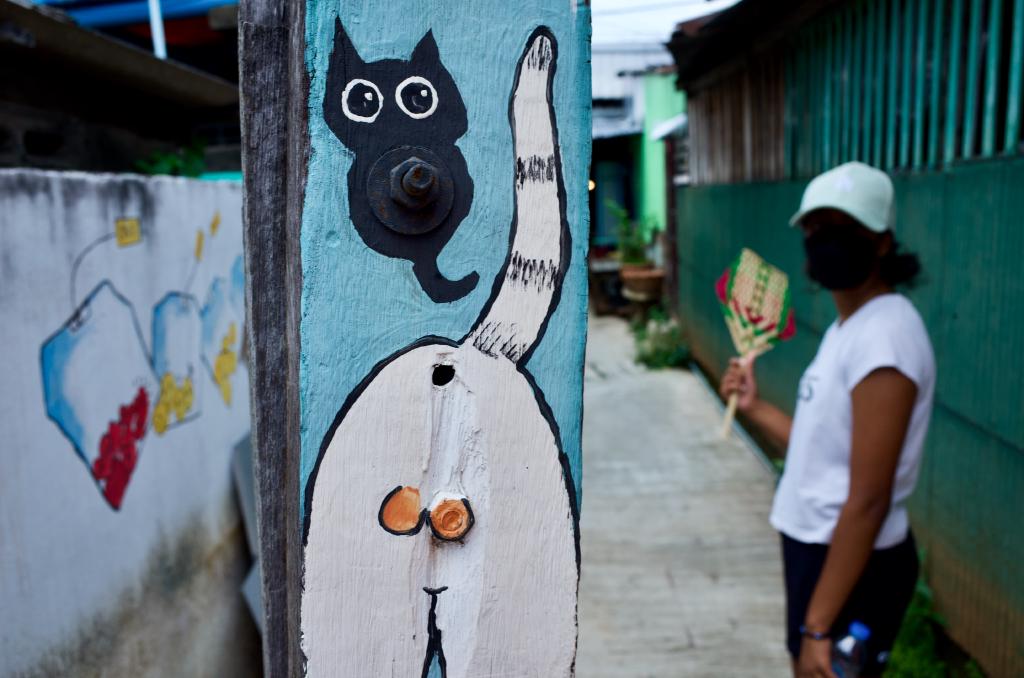 Being cheeky.
Being cheeky.
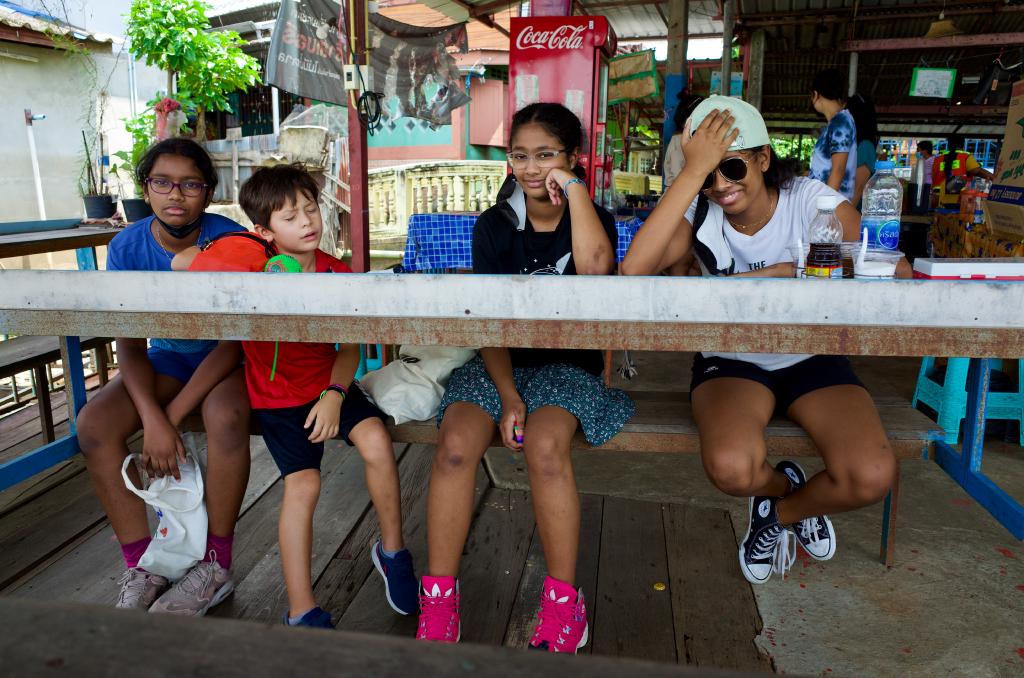
 Lunch on the river.
Lunch on the river.
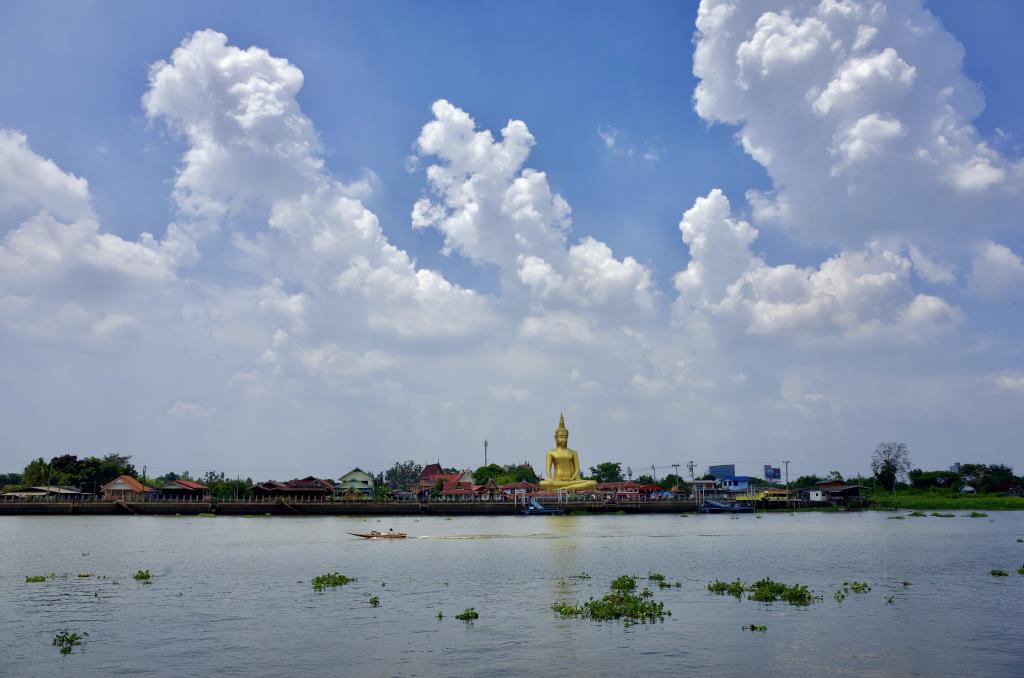 The 19 m (62 ft) Buddha of Wat Bang Chak sites on the opposite bank from Ko Kret.
The 19 m (62 ft) Buddha of Wat Bang Chak sites on the opposite bank from Ko Kret.
